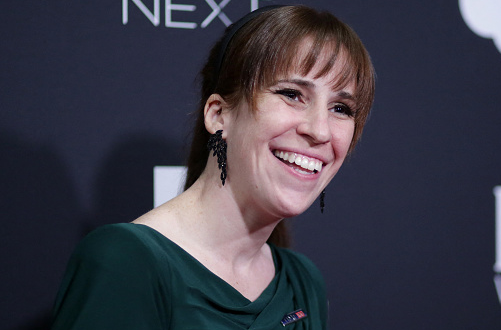NIBIB researcher named to TIME Magazine’s TIME100 Next list
These days, medical advances are the result of open lines of communication and collaboration between clinicians, scientists, and engineers. As this trend continues, and disciplines become increasingly intertwined, the ability to navigate partnerships across fields will only become more essential. Few are perhaps better suited for this future than Kaitlyn Sadtler.
A bioengineer at the National Institute of Biomedical Imaging and Bioengineering (NIBIB), Sadtler has flourished as a leader of many impactful, interdisciplinary studies. For her role in shaping the future of medical research, TIME magazine has named Kaitlyn Sadtler to the TIME100 Next 2024 List.
She joins the ranks of NIH innovators from previous lists such as director of the Advanced Research Projects Agency for Health (ARPA-H) Renee Wegrzyn, Ph.D., and former Vaccine Research Center research fellow Kizzmekia Corbet, Ph.D.

Sadtler got her start in science with immunology, and through her postbaccalaureate and graduate studies, she also became well versed in regenerative medicine and materials science. The NIBIB lab Sadtler oversees, called the Section on Immunoengineering, operates at the crossing of these subjects, examining the immune system’s response to medical devices and its role in wound healing.
Her work has revealed mechanisms by which certain medical devices — such as those made of naturally derived biomaterials — steer the immune system toward wound healing, while others trigger inflammation and scarring. The findings could be instrumental in designing medical technology that is safer and longer lasting in the body.
In 2020, Sadtler pivoted her focus to the spread of COVID-19. She took charge of a team that established methods for accurate lab-based serology testing and then employed them in analyzing samples from more than 9,000 people across the U.S., gaining insights into undiagnosed infections in the country.
To answer complex research questions pertaining to traumatic injury, COVID-19, or some other condition, Sadtler has needed to work side-by-side with engineers, biologists, chemists, physicists, surgeons, infectious disease experts, and more. The success she’s had in doing so stems not only from her interest in science and medicine but her passion for communication.
“Dissemination is a huge part of doing science. It’s needed to build public trust but also to reach potential collaborators in other fields that could bring a new perspective to the table,” Sadtler said.
Opportunities for formal science communication training as a student were sparse for Sadtler, so she made do by explaining her studies to friends in different majors. As the first person in her family to obtain a Ph.D., calls and visits back home to rural Maryland entailed conversations with her parents about how her research could impact people’s lives.
While a postdoctoral fellow at the Massachusetts Institute of Technology, she applied for an opportunity to grow as a communicator and explain science to a broader audience. In 2018, Sadtler became a TED Fellow and delivered a talk covering her discovery of the critical role a specific kind of immune cell played in muscle regeneration.
She received coaching from professionals on communication strategies to convey complex subjects, such as the use of plain language, comparisons to familiar ideas, and structuring a message into a story.
“The same skills I used for that talk, I use to communicate with other scientists,” Sadtler said. “Ultimately, scientists are people too and people want a well-crafted story.”
A key part of her skillset is knowing her audience.
For example, during the pandemic, she led teams of engineers, clinicians, and mathematicians, all of whom brought forth their own terms and methodologies. She worked to be mindful to familiarize herself with new ideas and convey her own to establish a common language.
When communicating with the public, Sadtler is careful to avoid common pitfalls such as overselling new technologies to an eager public. She recalls a time, close to the turn of the century, when regenerative medicine was spoken of as a cure-all solution.
“In reality, science takes time and lots of trial and error,” Sadtler said.
Now, decades later she believes regenerative medicine is headed in the right direction by integrating ideas and people from different fields and backgrounds.
As she works at the cutting edge of the ever-evolving field, Sadtler believes she and her colleagues are now laying the critical groundwork needed for future leaps.
“We won’t be regrowing full limbs anytime soon, but we’re making steady progress, and even incremental changes go a long way,” Sadtler said. “If, at the end of my career, someone could do something small but meaningful that they couldn’t do before — open a cabinet on their own or hug a loved one — that’s enough for me.”
